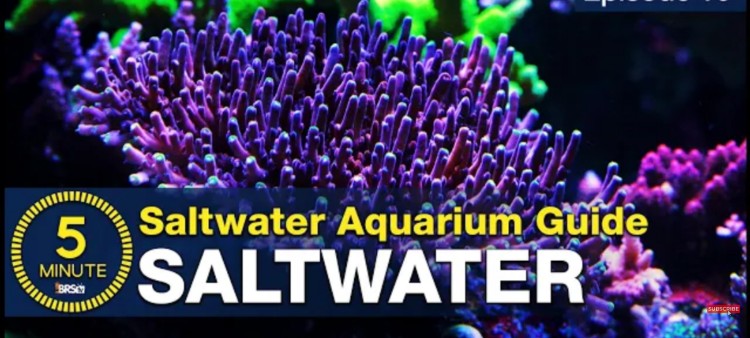A Guide to Mix Up the Best Saltwater
- Mar 07, 2022
- Anshika Mishra
- 253 0 0

In this aqaurium guide, let us show you how to mix saltwater. We will also answer questions like how long you can store it.
So, let's start mixing up some salt, and the cool piece here is when we are done, we will turn this lab-grade pure zero TDS water into seawater ready for a reef tank filled with thriving corals and fish.
Mixing and storing saltwater's pretty simple. It is just some salt mix, RO/DI water, and a small mixing pump. We'll mix it properly first, share how long it can be scored, and after what we believe to be the right salt mix for most reefers.
Choosing the Right Gears
The most commonly used saltwater mix bucket is a rubber-made trashcan. The type of plastic made up of has been used by reefers for decades and is readily available at most big-box hardware stores.
In this case, try to get something about as big as a tank just because you can, and make sure you get the lid. Put a float valve on it so your RO systems can fill it easily and automatically turn it off when full.
Another two containers now, one for freshwater and one for saltwater. So, you will need a push-connect-t and a couple of RO line valves or potentially the three-way push connect the valve to direct water between the two depending upon which one you want to fill.
At this point, there are dozens of different brands of salt mixes you can choose from. The best way to put it is all the popular ones are decent options. So, don't get hung up or trapped in the great salt debate. Just pick the one that speaks to you and move forward.
However, make sure to choose one that, once mixed, stores better, meaning stable parameters with no brown residue or precipitation for many weeks to months.
The water in your tank will never be better than what you start with, and a good salt mix helps you maintain it.
Mixing the Salt
While most sales have different mixing procedures, some require heating, limiting, or even continuous mixing. The safest bet is to read the instructions on the bucket and follow them.
Usually, it would be best to put a flow pump in the bottom of the bin, get the water moving, and start adding salt. You want to add two cups per 5-gallons container. You must add the salt to nearly the full amount of water you want to make.
Adding the water to the salt or making a concentrated solution can cause precipitation and create an inconsistent mix. Getting the right amount of salt in the water or the right salinity is also important.
The two to tow-and-a half-cup pre-5-gallons is a rough guideline. Next, we measure salt with a refractometer that measures the salt in parts per thousand.
Drop a couple of drops of your saltwater in the lens, close it, give it about a minute to stabilize, and then look through it. If you are under a 35 ppt, then add some more salt. If you are over, add some more salt and dilute it.
There are also digital refractometers where you can drop water right on a lens and push a button to get a digital readout.
In either case, it is easy to fine-tune your salt in a couple of minute processes. With a larger than 25% water change, you can drop a heater and get it at the same temperature as your tank.
How Long Can You Store It?
A good quality salt mix stores well for many weeks to months as long as you put the lid on to prevent most evaporation. In fact, after those first few hours, you can even pull the plug on the pump because it is fully mixed and will stay that way.
So, the answer is you can store it indefinitely, but in reasonable terms.
Pouring the Water
Now that your water is ready for the tank, it is time to pour it into the tank. If you want to prevent the sand from blowing all over, you can pour it into a container that overflows into the tank. But it is a good time to find that packet that came with your sand.
After that, add your flow pumps and help remove the sandy cloud.






About author